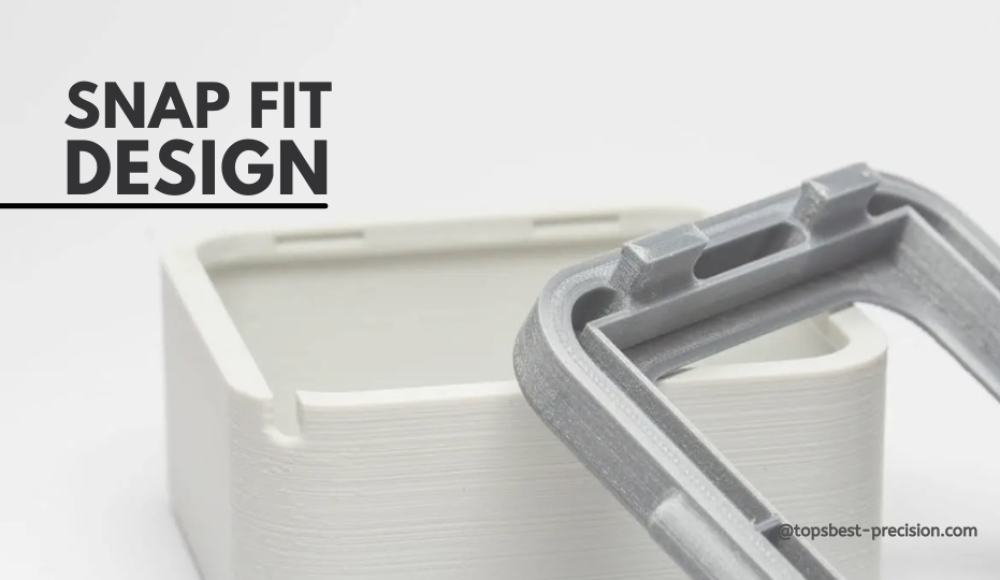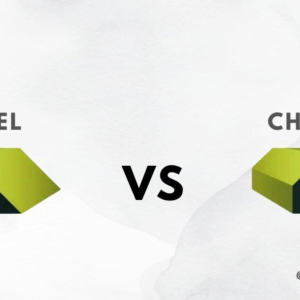Snap-fit joints are a common way to fasten parts together. Several products use snap-fit designs for construction and it found uses in many objects of everyday use. Some examples are Tupperware lids, bottle caps of snap-on, and pen caps. This article seeks to expound on details concerning snap-fit joints. Various types of snap fits will be discussed. Furthermore, useful tips for best snap fit design, benefits, and drawbacks will be outlined too.
What Is a Snap Fit?
A snap fit is used in design as a fastening technique. It employs hooks or heads as fasteners to join parts together by a snap-fit. Many parts can be assembled and dismantled quickly. In addition, no additional tools or fasteners are required.
Snap-fit joints can be classified as assembly joints. In some cases, they are considered to be part of this category. In the snap-fitting method, there is a satisfactory connection of flexible components. A part connects with another part through a plug and hole mechanism or one part fits into another. Sustained bonding requires the flexibility of the components to be bent and inserted into one another.
How to Create a Snap Fit
Snap-fit designs are easier to create when you know the flexible aspects of each type. Using snap-fit joints enables the reduction of connection points in an assembly. The working principle of snap-fit joints is that a projecting part is fitted into a depression. The depression fits into the protruding part and is locked in place. These joints can either be fixed or disassembled depending on the undercut type, design, and assembly method. Their construction requires appropriate material selection when developing reusable snap fits. The force may be constant, and thereby cause fatigue stress and failure of the component in question.
Types of Snap Fit Joints
Different snap-fit joints have certain uses, advantages, and disadvantages as described below. This section describes the basic ones.
1. Cantilever Snap Fit
Cantilever snap-fits are the most common type of snap-fit designs. This joint has a cantilever arm with one of its elements fitted at the arm end. To assemble, the arm enters a cavity, nonetheless, it gets deformed. The interlocking feature then engages as the arm retracts to the original shape of the component. The cantilever joints can be either temporarily installed or built permanently. These joints are strong, however, issues like deformation/cleavage of the arm upon bending may happen.
2. Annular Snap Fit
Circular snap-fit connections entail a ring compressed onto a rigid groove. Compression creates a force on the ring to increase friction against the groove to hold it. Such joints are well suited to high load-bearing capacity because the stress in the cross-section is well distributed. However, hyper-extension and frequent use may cause issues. Over time, this can compromise the joint’s support and lead to looseness.
3. Torsion Snap Fit
Torsional snap fits act like cantilever fittings. They feature cantilever arms with clip-like engaging sections. A torsional force, often from a spring, locks the arm in place.
To assemble or disassemble, reverse the spring force. This action releases the clip. This joint has low failure rates and high durability.
4. U-Shaped Snap Fit
U-shaped snap joints involve an interlocking element that forms the U-shaped designs. You can imagine a cantilever arm resting on the opposite side, similar to folding. In assembly, the arm folds to make room for the clip that engulfs the other parts of the device. This design is practical and sound but has limitations of being easily hyper-extended due to stress concentration points. Further, its geometry poses a significant manufacturing challenge.
Snap Fit Design Calculations
Designing snap fits comprises more than calculations and material selection. Adhering to best practices in manufacturing is essential for optimal results.
Add Fillets
Fillets add value to a design that makes a huge difference when included in the design. In several cases, sharp edges imply stress concentrations on components. Sharp corners in the design of snap-fit cause localized stress, and therefore, failure risks must be avoided. Fillets are useful in decreasing stress concentration, particularly at the root of cantilevers. Moreover, they assist in lad balancing over a wide area.
Taper
Introducing a taper along the length of the snap-fit increases the joint life. Tapering reduces the cross-sectional area in a decreasing manner. Tapered hooks are the most effective than uniform cantilever hooks that experience uneven forces. This uneven stress may lead to failure beyond allowable limits. Moreover, tapered designs also utilize fewer materials hence reducing the manufacturing costs in large quantities.
Add Lugs
High-quality parts are usually accompanied by lugs. Lugs are small raised members used for positioning the mating surfaces. They also support the structures by taking and distributing shear forces.
Increase the Width of the Hook
Snap-fit joints are mainly used as load-bearing members. These designs are expected to work in high-loading frequencies. For cantilever designs, to increase durability, one of these ways is to increase the hook width.
Fatigue Life
Snap fittings that are poorly designed often prove ineffective when fatigue stresses. Fatigue failure is a result of cyclic loading, often found in snap fits which are assembled and disassembled frequently. Therefore, if the appropriate material with higher yield strength is chosen and structure geometry is carefully designed, then the problem of fatigue failure can be addressed.
Benefits of Snap Fit Joints
Snap-fit joints are widely used due to the several benefits, associated with product design. Here’s a brief overview of their key benefits:
Easy Assembly/Disassembly
Snap fittings are easy to assemble. Therefore, they are considered convenient to use when assembling the product components. These joints are quite easy to use and require minimal tools – they can be attached and removed in a matter of seconds.
No Extra Hardware
Snap joints can form mechanical joints on their own efficiently. Other hardware like nuts, washers, or screws are not required in their design.
High Dependability and Long Lifespan of Service
If Used appropriately, snap fits have been shown to last decades. They do not normally cause product failure in the long run.
Aesthetics
Mechanical fasteners are generally protruding and hence are an eyesore in most product designs. For instance, aerospace products have many discrete fasteners that are easily seen. On the other side, snap fits are concealed and do not interfere with design appearance.
Disadvantages of Snap Fit Joints
However, snap fittings have certain drawbacks, as outlined below:
Complicated Design Process
Manufacturing snap-fit joints is not an easy task. Recessed sections, or areas where two components fit together and stress concentrations make the material more difficult to manufacture. Having undercuts, required for proper mold function adds extra difficulty and costs. Moreover, great caution should be taken during ejection to avoid over-stretching of the muscles.
Easy to Break
Snap fittings are flexible components and are most likely to break. Though strong they can break under slight pressure.
Guidelines For Selecting the Right Snap Fit Joints
Snap fits are different from design in many ways. Engineers must take into account application, material availability, manufacturability, and cost into consideration. In this section, the reader will be provided with professional guidelines regarding snap-fit design.
Appropriate Tolerance
Problems are usually associated with surface roughness in contact with interfacing components. High stress concentration occurs during excessive interference. While weak engagement force is experienced when there is inadequate interference. It’s advised that tolerances should be kept between interference fits and sliding fits.
Base Fillet at Cantilever Arm
In cantilever joints, sharp corners at the arm’s base are important but it is not always viable to have them. The improvement of these corners by filleting also helps reduce stress concentrations.
Wide Clip
The clip is an essential part of snap fittings and takes heavy loads in use. A wider clip increases the strength and also improves the stress distribution.
Stops and Lugs
These design elements avoid material inclusion beyond a given application. Because over-insertion of such components can result in stress concentrations and hyper-extension. They also help in locating mating components and distributing loads.
Tapered Design
The snap-fit design can be slightly modified to have a taper. These tapers help decrease stress concentrations but also conserve material.
Applications of Snap-Fit Design
Snap-fit joints are often used due to their form and function. Below are some common application areas.
Snap Fasteners
Snap fasteners are preferred when you desire to develop long-lasting and pleasing-to-the-eye connections. They are concealed while giving excellent joints.
Pen Caps
The pen caps usually have an annular snap-fit design. The users apply pressure to the pen, and as a result, the cap secures its hold properly.
Bag Latches
Small snap latches on trekking bags securely fasten the contents, especially when the bags are full. Some of these cantilever joints provide the required capacity for the containment of forces.
Tupperware Lids
Tupperware containers use snap-on fittings for the top part of the containers. These fittings last for years and make tight joints to ensure that the food stays fresh.
Conclusion
Snap-fit joints enhance product manufacturing significantly. They provide efficient methods for creating secure mechanical fasteners. Owing to their ubiquitous existence, these materials are deemed worthy of understanding by design engineers.
Tops Precision is one of the leading manufacturers of metal and plastic snap fits for several projects. We offer on-demand rapid manufacturing services to our valued customers. Full-service solutions encompassing prototyping services as well as part manufacturing provide the foundation for your ideas. For consultation and quotations, get in touch with us immediately.
FAQs
Q1. What are snap-fit joints?
Snap-fitt joints are defined as connections. They are used as features, designed to fit into each other. It connects two parts and uses no extra fasteners or adhesive to make the connection even stronger.
Q2. Fabrication techniques for designing snap-fit joints?
Snap-fit joints can be created by injection molding, as the most prominent technique. CNC machining is also sometimes employed as is 3D printing although less often as the former.
Q3. Which material is suitable for designing snap-fit joints?
Typical materials used for snap-fitt joints include plastics such as ABS, PETG, Nylon as well and PLA. These materials are versatile and can be shaped in any way and easily.
Q4. What tolerances should be used in the snap-fit design?
As it concerns snap fit tolerances, there are no strict regulations. It’s important not to fit the clothes too closely or too loosely, though. The tolerances depend upon joint type and material and a general gap width will be in the range of 0.2 to 0.5mm.



